#carte de visite art
Explore tagged Tumblr posts
Text

sono giacomo, penso

sono emilia, forse



#famigliacarta#sardegna#ballettesavary#foto antiche#polvere#oristano#1800s#1900s photography#1800s photography#genealogy#genealogia#carte de visite art#vintage#old photo#sardinia#tombstone
2 notes
·
View notes
Text
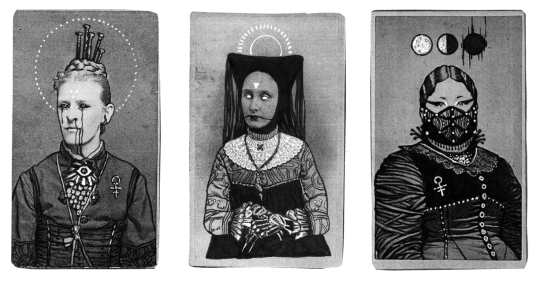
three cards from the visitors, pen & white gel pen on photocopy
one of my favorite mixed media pastimes, as a collector of cartes de visite - no actual CDVs were harmed here, drawing on a copy is easier anyway & i love the textures it adds. you can get the whole mini-zine (six images altogether) here for free or donation.
69 notes
·
View notes
Text

When I think of the Union General Officers' CDV, I often think,"...come to think of it I've never seen 🌊Papi🌊 in civvies for his CDV" but then lo and behold! Turns out there is a CDV of Farragut in civilian clothes(!!). This was given by him to the sculptor William Henry Philip as a reference for his bust. Other than this CDV, Farragut also gave another one, this time in uniform (see under the cut↓).

yea yea another Naps pose BUT THIS IS ALSO A NEW CDV TO ME!!!
#what a day it was to see a previously unknown CDVs of 🌊papi🌊#glasgow in civvie Glasgow in civvie GLASGOW IN CIVVIE#not art#writings#american history#david farragut#david glasgow farragut#carte de visite#american civil war#yea yea potato quality (i only got it cuz I screencapped it too lmaosob 🥲🥴🙃)#farragut friday
3 notes
·
View notes
Text

This is supposed to look like a carte de visite
#art#artwork#drawing#pencil#sketchbook#sketching#artists on tumblr#traditional art#artistic#pencil art#hand drawn#william barker cushing#william b cushing#william cushing#will cushing#carte de visite
2 notes
·
View notes
Text

[FRENCH, english below] Commande réalisée pour une carte de visite. Merci à Audrey pour sa confiance ! Avec elle vos chiens sont entre de bonnes mains 🐶 ! Vous avez envie d'une carte de visite personnalisée ? Contactez-moi par email : [email protected] ---------------------------------- [ENGLISH] Commissions for a business card. Thank you to Audrey for her trust ! With her your dogs are in good hands 🐶! The text says : "Whether he is big or small and whatever his race, he deserves an adequate education." Want a personalized business card? Contact me by email: [email protected]
#dog#dog training#buisnesscard#carte de visite#educatricecanine#hautespyrenees#ravla#happiness#krita#kritadrawing#digital art#kritaart#digital illustration
0 notes
Text
Paywall-free version
On the outskirts of Austin, Texas, what began as a fringe experiment has quickly become central to the city’s efforts to reduce homelessness. To Justin Tyler Jr., it is home.
Mr. Tyler, 41, lives in Community First! Village, which aims to be a model of permanent affordable housing for people who are chronically homeless. In the fall of 2022, he joined nearly 400 residents of the village, moving into one of its typical digs: a 200-square-foot, one-room tiny house furnished with a kitchenette, a bed and a recliner.
The village is a self-contained, 51-acre community in a sparsely populated area just outside Austin. Stepping onto its grounds feels like entering another realm.
Eclectic tiny homes are clustered around shared outdoor kitchens, and neat rows of recreational vehicles and manufactured homes line looping cul-de-sacs.
There are chicken coops, two vegetable gardens, a convenience store, art and jewelry studios, a medical clinic and a chapel.
Roads run throughout, but residents mainly get around on foot or on an eight-passenger golf cart that makes regular stops around the property.
Mr. Tyler chose a home with a cobalt-blue door and a small patio in the oldest part of the village, where residents’ cactus and rock gardens created a “funky, hippie vibe” that appealed to him. He arrived in rough shape, struggling with alcoholism, his feet inflamed by gout, with severe back pain from nearly 10 years of sleeping in public parks, in vehicles and on street benches.
At first, he kept to himself. He locked his door and slept. He visited the clinic and started taking medication. After a month or so, he ventured out to meet his neighbors.
“For a while there, I just didn’t want to be seen and known,” he said. “Now I prefer it.”
Between communal meals and movie screenings, Mr. Tyler also works at the village, preparing homes for the dozen or more people who move there each month.
In the next few years, Community First is poised to grow to nearly 2,000 homes across three locations, which would make it by far the nation’s largest project of this kind, big enough to permanently house about half of Austin’s chronically homeless population.
Tiny-home villages for people who have been homeless have existed on a small scale for several decades, but have recently become a popular approach to addressing surging homelessness. Since 2019, the number of these villages across the country has nearly quadrupled, to 124 from 34, with dozens more coming, according to a census by Yetimoni Kpeebi, a researcher at Missouri State University.
Mandy Chapman Semple, a consultant who has helped cities like Houston transform their homelessness systems, said the growth of these villages reflects a need to replace inexpensive housing that was once widely available in the form of mobile home parks and single room occupancy units, and is rapidly being lost. But she said they are a highly imperfect solution.
“I think where we’re challenged is that ‘tiny home’ has taken on a spectrum of definitions,” said Chapman Semple. Many of those definitions fall short of housing standards, often lacking basic amenities like heat and indoor plumbing, which she said limits their ability to meet the needs of the population they intend to serve.
But Community First is pushing the tiny home model to a much larger scale. While most of its homes lack bathrooms and kitchens, its leaders see that as a necessary trade-off to be able to creatively and affordably house the growing number of people living on Austin’s streets. And unlike most other villages, many of which provide temporary emergency shelter in structures that can resemble tool sheds, Community First has been thoughtfully designed with homey spaces where people with some of the highest needs can stay for good. No other tiny home village has attempted to permanently house as many people.
Austin’s homelessness rate has been rapidly worsening, and the city’s response has whipped back and forth... In October [2023], the official estimate put the number of people living without shelter at 5,530, a 125 percent increase from two years earlier. Some of that rise is the result of better outreach, but officials acknowledged that more people have become homeless. City leaders vowed to build more housing, but that effort has been slowed by construction delays and resistance from residents.
Meanwhile, outside the city limits, Community First has been building fast. [Note from below the read more: It's outside city limits because the lack of zoning laws keeps more well-off Austin residents from blocking the project, as they did earlier attempts to build inside the city.] In a mere eight years, this once-modest project has grown into a sprawling community that the city is turning to as a desperately needed source of affordable housing. The village has now drawn hundreds of millions of dollars from public and private sources and given rise to similar initiatives across the country.
This rapid growth has come despite significant challenges. And some question whether a community on the outskirts of town with relaxed housing standards is a suitable way to meet the needs of people coming out of chronic homelessness. The next few years will be a test of whether these issues will be addressed or amplified as the village expands to five times its current size.
-via New York Times, January 8, 2024. Article continues below (at length!)
The community versus Community First
For Alan Graham, the expansion of Community First is just the latest stage in a long-evolving project. In the late 1990s, Mr. Graham, then a real estate developer, attended a Catholic men’s retreat that deepened his faith and inspired him to get more involved with his church. Soon after, he began delivering meals as a church volunteer to people living on Austin’s streets.
In 1998, Mr. Graham, now 67, became a founder of Mobile Loaves and Fishes, a nonprofit that has since amassed a fleet of vehicles that make daily rounds to deliver food and clothing to Austin’s homeless...
Talking to people like Mr. Johnston [a homeless Austin resident who Graham had befriended], Mr. Graham came to feel that housing alone was not enough for people who had been chronically homeless, the official term for those who have been homeless for years or repeatedly and have physical or mental disabilities, including substance-use disorders. About a third of the homeless population fits this description, and they are often estranged from family and other networks.
In 2006, Mr. Graham pitched an idea to Austin’s mayor: Create an R.V. park for people coming out of chronic homelessness. It would have about 150 homes, supportive services and easy access to public transportation. Most importantly, it would help to replace the “profound, catastrophic loss of family” he believed was at the root of the problem with a close-knit and supportive community.
The City Council voted unanimously in 2008 to lease Mr. Graham a 17-acre plot of city-owned land to make his vision a reality. Getting the council members on board, he said, turned out to be the easy part.
When residents near the intended site learned of the plan, they were outraged. They feared the development would reduce their property values and invite crime. One meeting to discuss the plan with the neighborhood grew so heated that Mr. Graham was escorted to his car by the police. Not a single one of the 52 community members in attendance voted in favor of the project.
After plans for the city-owned lot fell apart and other proposed locations faced similar resistance, Mr. Graham gave up on trying to build the development within city limits.
In 2012, he instead acquired a plot of land in a part of Travis County just northeast of Austin. It was far from public transportation and other services, but it had one big advantage: The county’s lack of zoning laws limited the power of neighbors to stop it.
Mr. Graham raised $20 million and began to build. In late 2015, Mr. Johnston left the R.V. park he had been living in and became the second person to move into the new village. It grew rapidly. In just two years, Mr. Graham bought an adjacent property, nearly doubling the village’s size to 51 acres and making room for hundreds more residents.
And then in the fall of 2022, he broke ground on the largest expansion yet: Adding two more sites to the village, expanding it by 127 acres to include nearly 2,000 homes.
“No one ever really did what they first did, and no one’s ever done what they’re about to do,” said Mark Hilbelink, the director of Sunrise Navigation Center, Austin’s largest homeless-services provider. “So there’s a little bit of excitement but also probably a little bit of trepidation about, ‘How do we do this right?’”
What it takes to make a village
Since he moved into Community First eight years ago, Mr. Johnston has found the stability that eluded him for so long. Most mornings, he wakes up early in his R.V., feeds his scruffy adopted terrier, Amos, and walks a few minutes down a quiet road to the village garden, where neat rows of carrots, leeks, beets and arugula await his attention.
Mr. Johnston worked in fast-food restaurants for most of his life, but he learned how to garden at the village. He now works full time cultivating produce for a weekly market that is free to residents.
“Once I got here, I said, This is where I’m going to spend pretty much my entire life now,” Mr. Johnston said.
Everyone at the village pays rent, which averages about $385 a month. The tiny homes that make up two-thirds of the dwellings go for slightly lower, but have no indoor plumbing; their residents use communal bathhouses and kitchens. The rest of the units are R.V.s and manufactured homes with their own bathrooms and kitchens.
Like Mr. Johnston, many residents have jobs in the village, created to offer residents flexible opportunities to earn some income. Last year, they earned a combined $1.5 million working as gardeners, landscapers, custodians, artists, jewelry makers and more, paid out by Mobile Loaves and Fishes.
Ute Dittemer, 66, faced a daily struggle for survival during a decade on the streets before moving into Community First five years ago with her husband. Now she supports herself by painting and molding figures out of clay at the village art house, augmented by her husband’s $800 monthly retirement income. A few years ago, a clay chess set she made sold for $10,000 at an auction. She used the money to buy her first car.
“I’m glad that we are not in a low-income-housing apartment complex,” she said. “We’ve got all this green out here, air to breathe.”
A small number of residents have jobs off-site, and a city bus makes hourly stops at the village 13 times a day to help people commute into town.
But about four out of five residents live on government benefits like disability or Social Security. Their incomes average $900 a month, making even tiny homes impossible to afford without help, Mr. Graham said.
“Essentially 100 percent of the people that move into this village will have to be subsidized for the rest of their lives,” he said.
For about $25,000 a year, Mr. Graham’s organization subsidizes one person’s housing at the village. (Services like primary health care and addiction counseling are provided by other organizations.) So far, that has been paid for entirely by private donations and in small part from collecting rent.
This would not be possible, Mr. Graham said, without a highly successful fund-raising operation that taps big Austin philanthropists. To build the next two expansions, Mr. Graham set a $225 million fund-raising goal, about $150 million of which has already been obtained from the Michael and Susan Dell Foundation, the founder of the Patrón Spirits Company, Hill Country Bible Church and others.
Support goes beyond monetary donations. A large land grant came from the philanthropic arm of Tito’s Handmade Vodka, and Alamo Drafthouse, an Austin-based cinema chain, donated an outdoor amphitheater for movie screenings. Top architectural firms competed for the chance to design energy-efficient tiny homes free of charge. And every week, hundreds of volunteers come to help with landscaping and gardening or to serve free meals.
Around 55 residents, including 15 children, live in the village as “missionals” — unpaid neighbors generally motivated by their Christian faith to be part of the community.
All missionals undergo a monthslong “discernment process” before they can move in. They pay to live in R.V.s and manufactured homes distinguished by an “M” in the front window. Their presence in the community is meant to guard against the pitfalls of concentrated poverty and trauma.
“Missionals are our guardian angels,” said Blair Racine, a 69-year-old resident with a white beard that hangs to his chest. “They’re people we can always call. They’re always there for us.”
After moving into the village in 2018, Mr. Racine spent two years isolated in his R.V. because of a painful eye condition. But after an effective treatment, he became so social that he was nicknamed the Mayor. Missional residents drive him to get his medication once a week, he said. To their children he is Uncle Blair.
Though the village is open to people of any religious background, it is run by Christians, and public spaces are adorned with paintings of Jesus on the cross and other biblical scenes. The application to live in the community outlines a set of “core values” that refer to God and the Bible. But Mr. Graham said there is no proselytizing and people do not have to be sober or seek treatment to live there.
Mr. Graham lives in a 399-square-foot manufactured home in the middle of the village with his wife, Tricia Graham, who works as the community’s “head of neighbor care.” He said they do not have any illusions about solving the underlying mental-health and substance-use problems many residents live with, and that is not their goal.
“This is absolutely not nirvana,” Mr. Graham said. “And we want people to understand the beauty and the complexity of what we do. I wouldn’t want to be anywhere else on the face of the planet than right here in the middle of this, but you’re not fixing these things.” ...
From an experiment to a model
Community First has already inspired spinoffs, with some tweaks. In 2018, Nate Schlueter, who previously worked with the village’s jobs program, opened Eden Village in his hometown, Springfield, Mo. Unlike in Community First, every home in Eden Village is identical and has its own bathroom and kitchen. Mr. Schlueter’s model has spread to 12 different cities with every village limited to 50 homes or fewer.
“Not every city is Austin, Texas,” Mr. Schlueter said. “We don’t want to build a large-scale village. And if the root cause of homelessness is a loss of family, and community is something that can duplicate that safety net to some extent, to have smaller villages to me seemed like a stronger community safety net. Everybody would know each other.”
The rapid growth of Community First has challenged that ideal. In recent years, some of the original missional residents and staff members have left, finding it harder to support the number of people moving into the village. Steven Hebbard, who lived and worked at the village since its inception, left in 2019 when he said it shifted from a “tiny-town dynamic” where he knew everyone’s name to something that felt more like a city, straining the supportive culture that helped people succeed.
Mobile Loaves and Fishes said more staff members had recently been hired to help new residents adjust, but Mr. Graham noted that there was a limit to what any housing provider could do without violating people’s privacy and autonomy.
Despite these concerns, the organization, which had been run entirely on private money, has recently drawn public support. In January 2023, Travis County gave Mobile Loaves and Fishes $35 million in American Rescue Plan Act funds to build 640 units as part of its expansion.
Then four months later came a significant surprise: The U.S. Department of Housing and Urban Development approved the use of federal housing vouchers, which subsidize part or all of a low-income resident’s rent, for the village’s tiny homes. This will make running the village much more financially sustainable, Mr. Graham said, and may make it a more replicable blueprint for other places.
“That’s a big deal for us, and it’s a big deal on a national basis,” Mr. Graham said. “It’s a recognition that this model, managed the way that this model is, has a role in the system.”
Usually, the government considers homes without indoor plumbing to be substandard, but, in this case, it made an exception by applying the housing standards it uses for single-room-occupancy units. The village still did not meet the required ratio of bathrooms per person, but at the request of Travis County and the City of Austin’s housing officials, who cited Austin’s “severe lack of affordable housing” that made it impossible for some homeless people with vouchers to find anywhere else to live, HUD waived its usual requirements.
In the waiver, a HUD staffer wrote that Mr. Graham told HUD officials over the phone that the proportion of in-unit bathrooms “has not been an issue.” But in conversations with The Times, other homeless-service providers in Austin and some village residents said the lack of in-unit bathrooms is one of the biggest problems people have with living there. It also makes the villages less accessible to people with certain disabilities and health issues that are relatively common among the chronically homeless....
Mr. Graham said that with a doctor’s note, people could secure an R.V. or manufactured home at the village, although those are in short supply and have a long waiting list. He said the village’s use of tiny homes allowed them to build at a fraction of the usual cost when few other options existed, and helps ensure residents aren’t isolated in their units, reinforcing the village’s communal ethos.
“If somebody wants to live in a tiny home they ought to have the choice,” Mr. Graham said, “and if they are poor we ought to respect their civil right to live in that place and be subsidized to live there.” But he conceded that for some people, “this might not be the model.”
“Nobody can be everything for everyone,” he said.
By the spring of 2025, Mr. Graham hopes to begin moving people into the next phase of the village, across the street from the current property. The darker visions some once predicted of an impoverished community on the outskirts of town overtaken by drugs and violence have not come to pass. Instead, the village has permanently housed hundreds of people and earned the approval and financial backing of the city, the county and the federal government. But for the model to truly meet the scale of the challenge in Austin and beyond, Chapman Semple said, the compromises that led to Community First in its current incarnation will have to be reckoned with.
“We can build smaller villages that can be fully integrated into the community, that can have access to amenities within the community that we all need to live, including jobs and groceries,” Chapman Semple said. “If it’s a wonderful model then we should be embracing and fighting for its inclusion within our community.”
-via New York Times, January 8, 2024
#housing crisis#unhoused#homelessness#homeless#housing#affordable housing#austin texas#austin#texas#texas news#united states#usa#poverty#cost of living#tiny home#tiny house#social support#community#good news#hope
396 notes
·
View notes
Photo

[Carte-de-Visite Album of Prominent Personages]. 1860s–70s. Credit line: Gift of Susanna Myers, 1953 https://www.metmuseum.org/art/collection/search/269659
#aesthetic#art#abstract art#art museum#art history#The Metropolitan Museum of Art#museum#museum photography#museum aesthetic#dark academia
19 notes
·
View notes
Text

Pour l'anniversaire de Lavi, il va y avoir tout pleins de goodies à acheter au Japon ( les veinards ; . ; ) . Voici le lien vers les site au cas où : Pop-up

Mashikaku Can Badge (Aveugle) vol.1
Prix : 550 yens (taxes incluses) / set 11 000 yens (taxes incluses) Nombre de types : 20 types (dont 2 types secrets) Taille : environ 58 mm x 58 mm

Carte de collection (aveugle) vol.1
Prix : 550 yens (taxes incluses) / set 6 600 yens (taxes incluses) Nombre de types : 12 types Taille : Environ 55 mm x 91 mm

Autocollant (aveugle) vol.1
Prix : 660 yens (taxes incluses) / set 7 920 yens (taxes incluses) Nombre de types : 24 types au total (1 paquet contient 2 pièces) Taille : environ L47 mm x H79 mm

Aimant carré (aveugle) vol.1
Prix : 660 yens (taxes incluses) / Ensemble 9 240 yens (taxes incluses) Nombre de types : 14 types Taille : Environ 55 mm x 80 mm

Aimant carré (aveugle) vol.2
Prix : 660 yens (taxes incluses) / Ensemble 9 240 yens (taxes incluses) Nombre de types : 14 types Taille : Environ 55 mm x 80 mm

Mini toile d'art (aveugle) vol.1
Prix : 1 100 yens (taxes incluses) / Ensemble 16 500 yens (taxes incluses) Nombre de types : 15 types Taille : Environ 84 mm x 63 mm

pince à cheveux en acrylique
Prix : 770 yens chacun (taxes incluses) Nombre de types : 5 types

porte-clés en acrylique pailleté
Prix : 1 430 yens chacun (taxes incluses) Nombre de types : 4 types

pochette transparente
Prix : 1 760 yens chacun (taxes incluses) Nombre de types : 4 types

Prix A : Art sur toile, 100 pièces gagnantes, 5 types au total Prix B : Mini charms, 520 pièces gagnantes, 13 types au total Prix C : Bromure magique, 12 types au total
*Pour le prix A, vous pouvez choisir votre design préféré . Selon l'heure de votre visite, vous ne pourrez peut-être pas sélectionner le modèle souhaité. Veuillez noter. *Les prix B et C sont distribués aléatoirement, vous ne pouvez donc pas choisir le design.
Voilà voilà ..... comment voulez-vous ensuite ne pas vouloir habité au Japon ? ; . ; Si seulement ces produits sortait du Pays pour venir chez nous ; . ;
24 notes
·
View notes
Text
Coming into Focus: A Good Omens Civil War AU by CemeteryAngel725

Special thanks to @shipper-of-all-things for helping me design the cover art for this fic!
Rated E, 6,721 words
Read on AO3 here!
Summary:
It is the summer of 1864, and Aziraphale is an itinerant photographer set up behind Union lines outside Petersburg, Virginia. He’s no stranger to pleasure, but he has always protected his heart. But when the redheaded colonel of the 5th New Jersey walks into his tent, he begins to wonder whether it’s time to rethink his stance on love.
Excerpt:
Aziraphale took the colonel by the elbow and guided him over to a small table. “I can make you a tintype, an ambrotype, or cartes de visite. The tintype, as you can see, is on a thin sheet of iron, and I can either mount it in a case for you or leave it uncased. The ambrotype is on a sheet of glass and is placed in a leather case over black fabric. Or I could use that same glass plate to print as many cartes de visite as you would require. If you are planning on sending this photograph home to Mrs. Crowley, either the uncased tintype or a carte de visite could easily be slipped into an envelope with a love letter.”
Col. Crowley threw back his head and laughed. “There is no Mrs. Crowley, Mr. Fell. No sweetheart either.”
“A handsome young man like you? Surely there must be.” Aziraphale had not missed the elegant line of that white throat, and it was driving him to distraction.
“Never had the inclination. Is there a Mrs. Fell?” Col. Crowley made Aziraphale feel like a butterfly pinned to a specimen card. He had unusually piercing eyes, a light honey brown that was nearly amber.
“There is not.” For a moment, Aziraphale held the colonel’s gaze, the air thick between them.
Thank you so much to @goodomensafterdark for all the support!
#good omens#good omens fanfiction#aziracrow#good omens fic#good omens fic recs#aziraphale#crowley#american civil war#history of photography
44 notes
·
View notes
Text
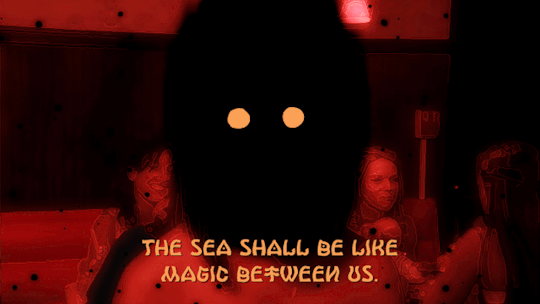
[The sea shall be like magic between us.]
IX - Nuit sans fin
La dernière conversation avec Christina, où je lui avais dit que j'avais utilisé les toilettes du Café d'Auteur, un café fermé depuis cinq ans, avait été un avertissement. Sans parler des huit heures que j'avais complètement bloquées, pendant lesquelles je lui avais apparemment demandé de rechercher d'éventuels liens entre Leonora Carrington et Italo Calvino. Des cartes de tarot, des chansons codées, des cartes du monde étranges trouvées sur des sites web encore plus étranges ? Euphémie ? Je perdais la tête.
Les mois passèrent et la vie reprit son cours normal. Trop de travail, trop de télévision, trop de consommation de nouvelles (qui devenaient de plus en plus déprimantes chaque jour). Le monde fascinant de Leonora et ce jeu (ou quoi que ce soit) était une tentation constante. Une évasion de la monotonie. Mais ça avait aussi un air de danger et j'ai donc réussi à résister à l'envie.
En février, j'ai pris l'Eurostar pour voir un ami à Londres. Et chaque fois que je suis à Londres, on va à Tate Modern, cet incroyable musée de la couverture de l'album Pink Floyd. L'expo cette fois ? "Le surréalisme au-delà des frontières", mettant en évidence l’ œuvre de Carrington. Bien sûr. Mon ami avait déjà acheté des billets et j'étais sûr que le jeu ne me suivrait pas à Londres. Donc, hop, on est parti.
L'expo était incroyable et consistait en des peintures d'artistes avant-garde un peu moins connus, comme Erna Rosenstein, Dédé Sunbeam, Ikeda Tatsuo, Hector Hyppolite, Eugenio Granell, Giorgio de Chirico et Remedios Varo. C'était comme passer d'un rêve étrange à un autre.
En particulier, les peintures de Leonora étaient fascinantes. L'expo présentait plusieurs de ses tableaux, dont sa toute première, intitulée Autoportrait (L'auberge du cheval de l'aube).

Cette peinture est normalement dans le Metropolitan Museum of Art de New York et c'était cool de pouvoir la voir. C'est une scène (en fait, deux scènes si tu comptes ce qui se passe dehors) à la fois très simple et vachement dramatique, à la fois stéréotypé féminin et masculin. Leonora et la Hyène regardent directement le spectateur, reflétant le comportement de l'autre. En fait, Leonora était souvent liée aux Hyènes, disant "je suis comme une hyène, je rentre dans les poubelles, j'ai une curiosité insatiable". La Hyène réunit ici le mâle et la femelle en un tout, métaphorique du monde de la nuit et du rêve. Pour moi, ce tableau est une exploration de soi, le côté sauvage, le côté curieux, le côté qui cherche la liberté.
J'étais là depuis longtemps à regarder le tableau quand une jeune femme est apparue à côté de moi. Au début, on a regardé le tableau en silence, mais après un certain temps, elle m'a posé une question. "Qu'est-ce que vous pensez que c'est, cette tache à côté de la Hyène ?" Franchement, je l'avais à peine remarqué, mais j'ai répondu, "C'est une bonne question, j'ai supposé que c'était juste une erreur qu'elle essayait de cacher ?" "Une hypothèse sûre", a-t- elle répondu. "Bien que… Carrington était apparemment depuis sa plus tendre enfance très fasciné par les aes sídhe, un peuple féerique surnaturel lié à la mythologie celtique des Gaëls à partir des histoires que sa mère, sa grand-mère et sa nounou lui avaient racontées. Peut-être que ce sont eux qui font une apparition."
C'était la première fois que j'entendais ça et j'étais vraiment intéressé à en savoir plus. Elle s'est présentée comme Ester et on a longuement parlé de Carrington, les Tuatha Dé Danann (la mythologie celtique irlandaise) et du surréalisme. Elle possédait une librairie pas trop loin de chez moi et avait clairement plongé dans sa propre marchandise. Quand mon ami réapparu (il avait disparu dans les œuvres d'André Breton), elle m'a donné la carte de visite de sa librairie et m'a dit qu'elle avait un livre qui pourrait m'intéresser. Si je voulais, je pouvais venir à tout moment pendant ma visite à Londres. Je l'ai remercié pour la conversation et lui ai dit au revoir.
J'ai passé un bon moment à Londres, avec beaucoup de cocktails, pâtisseries scandinaves et cuisine indienne. Le dernier jour, j'ai retrouvé la carte de visite pour The Library of Babel que Ester m'a donnée. C'était à proximité. La commodité et ma curiosité m'ont rendu impossible de résister.
Après avoir parcouru les petites rues pendant trente minutes, j'ai finalement trouvé la librairie. Avec un nom si spectaculaire, je ne m'attendais pas à un endroit aussi discret; un petit panneau étant la seule indication de ce qui nous attendait à l'intérieur. Je suis entré et j'ai vu immédiatement livre après livre. Le magasin se composait d'un bureau en bois et d'un nombre apparemment infini de livres empilés au hasard derrière. Je ne pouvais pas comprendre comment quelqu'un pouvait trouver quelque chose là.
Je n'avais même pas remarqué la personne qui était assise au bureau avant qu’il me demande si j'avais besoin d'aide. Je lui ai dit que j'avais reçu une invitation de Ester. Sans même demander mon nom, il dit "Ah oui, Ester a dit qu'elle est désolée de ne pas pouvoir être ici aujourd'hui, mais elle vous a laissé ce livre." Je l'ai remercié et j'ai attrapé mon portefeuille, mais il a immédiatement dit "non, non, pas de soucis".
Une fois à l'extérieur de la librairie, j'ai vu la note attachée au livre, "J'espère que ce livre vous trouvera bien et éclairera le chemin. Que les aes sídhe soient à vos côtés, toujours."
Le livre était intitulé Nuit sans fin et était une sorte de recueil de poésie. Je l'ai feuilleté lentement jusqu'à ce que j'arrive aux deux pages du milieu. Un frisson parcourut ma colonne vertébrale. Là, au milieu du livre, il y avait la même carte que j'ai trouvée sur le site web crypté.
#s11e07 favorites with a twist#guy fieri#guyfieri#diners drive-ins and dives#i tego arcana dei#terra incognita
74 notes
·
View notes
Text
yippee i finally did one of these 🙏 i was tagged by my sweetie friends @latenna & @ordinarymaine to do some oc associations ^_^v / tagging @camillathe6th, @dannyburke & @greenecreek if youse wanna do it i’ll link a blank version here 🤲
for fialine of course 🫶
animals.
white mountain ermine, buck moth.
colour.
off-white, saffron yellow.
month.
january.
songs.
francis – hayley hendrickx, max garcía conover. (but there’s something on your skin that you can’t get clean, there’s a fawn in the fence that you can’t get free)
mountain spines – marika hackman. (let me hold back the tears i’m sitting on, i will be plagued with your blood)
number.
nine.
plants.
aethusa cynapium, fool’s parsley – foolishness, gullibility, to burn.
smells.
cinnamon, peppermint, pine.
gemstone.
thulite – expression, passion.
time of day.
nautical twilight.
season.
winter.
places.
melodia’s garden at moonrise – once full of sweet, powder blue flowers that shimmer in moonlight. / a cove just beyond the gate – isolated and untouched.
food.
spiced apple porridge, cinnamon hard candies.
drinks.
mulled wine. hot tea with ginger.
element.
earth.
seasonings.
cinnamon, fennel, nutmeg.
sky.
enveloped by nimbostratus clouds, dark and dull with jagged edges.
weather.
the serenity of heavy snowfall.
magical power.
blindness, command, healing word.
weapons.
eight-flanged mace, imbued with radiant light. lovingly engraved with an ancient prayer.
method of long distance travel.
on foot.
art style.
neo-impressionism.
fear.
irrelevance.
mythological creature.
strix.
piece of stationary.
a worn, unremarkable carte de visite.
three emojis.
🫀🪽🌒
celestial body.
cepheus – the constellation named after the myth of king cepheus, who attempted to sacrifice his daughter to appease poseidon. one of its brightest stars, alfirk, loosely means “flock of sheep.”
10 notes
·
View notes
Text

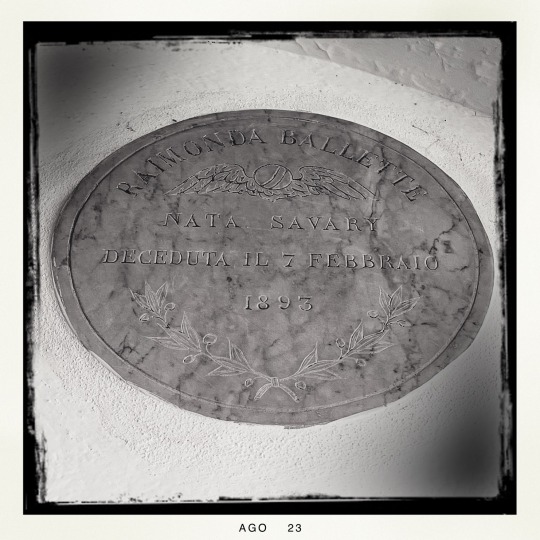
penso di essere giovanni, capitano, sposato con raimonda savary vedova raspi. ho due figli pietro e giuseppina.
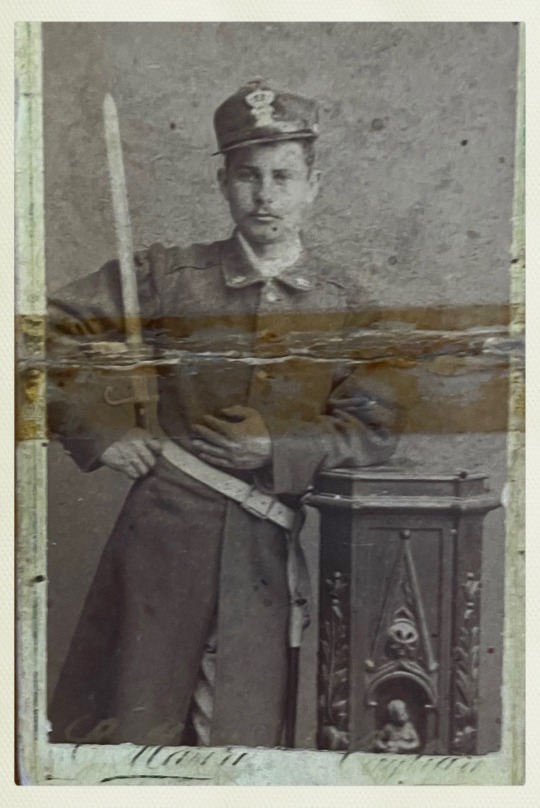
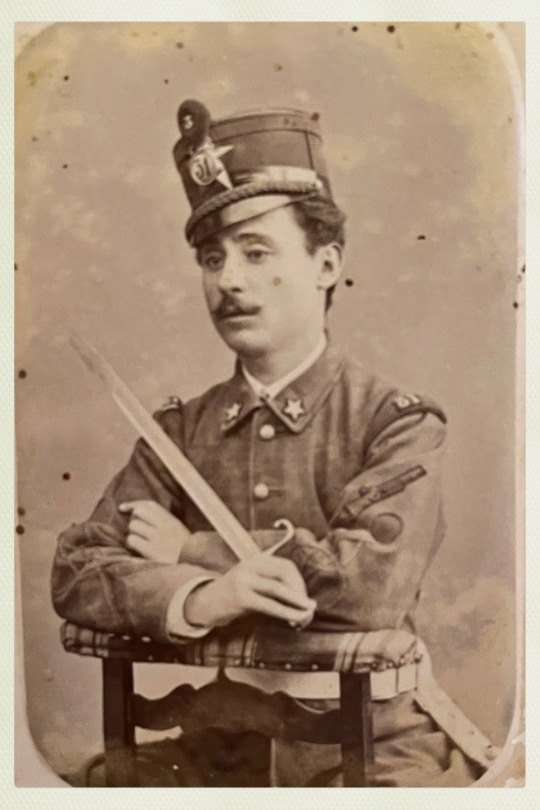
penso di essere pietro, medico, sposato con nunzia



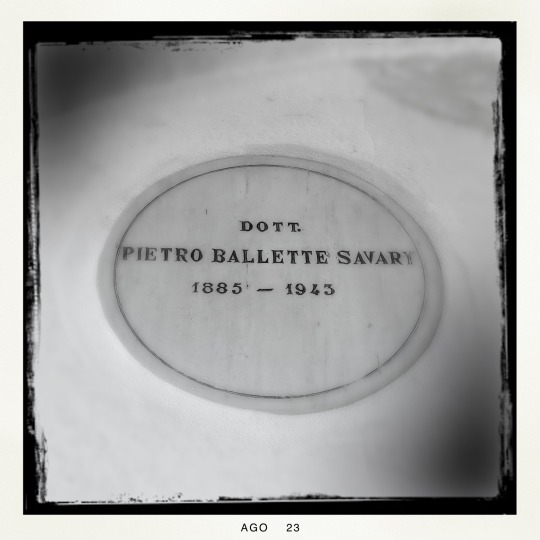
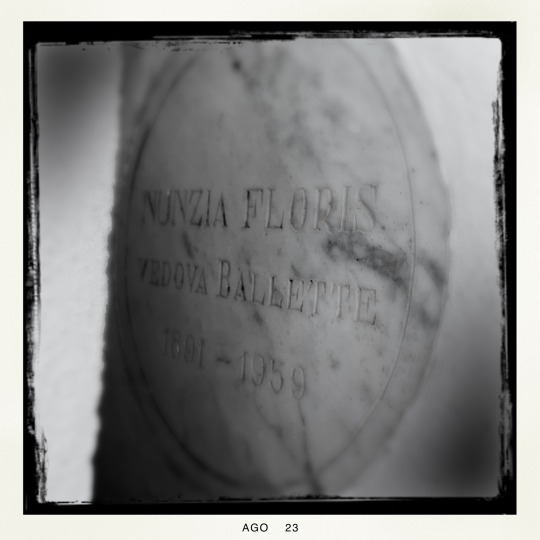
#famigliacarta#sardegna#oristano#ballettesavary#foto antiche#1800s#1900s photography#1800s photography#polvere#vintage#genealogy#genealogia#carte de visite art
1 note
·
View note
Note
Do you have any secret tips for restaurants or cafés for a trip to Paris?
Dear Paris Anon,
I am happy and amused you ask me this question. Happy, because I have been calling Paris home for six years: that means there are places where I was madly kissing a beautiful (and cruel) boy from Bastia, places where I walked at night drunk as a boiled owl with people who are still in my life, places where I regularly went shopping or having an endless coffee with friends and places I was entrusted with, like precious jewels. Amused, because to be honest, Paris is probably the last French destination I could think of for an enjoyable week-end en amoureux (I suppose you want to go as a couple?), right now: it is overpriced as hell (the Olympics are round the corner), dirty and seedy (I was shocked, last time I visited and Manu Macron, my old acquaintance of yore, spoke about parking all the homeless outside of town during the Games 'for aesthetic reasons' - the boy never had a sense of humor, trust me on this one).
I shall give you 5 restaurants and 5 cafés (oh God, why didn't you ask me about Bangkok, instead?). Many of them are on the Left Bank (all of my addresses were there, simply because the closer to the university, the better).
Five restaurants: as it happens in Rome (where the gap is truly tragic), I will try and recommend places where locals go. You will find a menu in English everywhere, but at least try the holy trinity of bonjour, l'addition (the check) et merci. All the Parisian waiters are sourer than the Politburo and insolent as highway robbers, but do not be deterred by their manners. Order away.
Le Relais de Venise - son entrecôte (271 Bd Pereire, 75017). It is not in the center. They do not take reservations. You will be met with a long line of people patiently waiting (Seinfeld style) to get in. They have a minimal set menu (which is always a very good sign: https://relaisdevenise.com/menus/set-menu.php). The waitresses are kind and dressed like 1920's maids. It will be the damn best entrecôte-frites you've ever had (their sauce is a secret). Nothing changed there since 1959. Double check opening times and plan accordingly: you will need a taxi and plenty of time ahead. Almost a bargain for its stellar performance. The London one is a sad spin off.
Le Soufflé (36 rue du Mont Thabor, 75001). An original choice, but oh so good! They only cook soufflés (not exactly a pudding, but a pudding angels must have on a daily basis). Very reasonably priced for Paris (set menus at 40 and 55 euros - https://www.lesouffle.fr/bienvenue/home/menu/). If you want to eat à la carte, I recommend le soufflé Henri IV (cheese soufflé with chicken & mushrooms sauce) : it is heaven.
La Jacobine (59-61 Rue Saint-André des Arts, 75006). You will find tourists in this one, it is always full. Service is impeccable. Do not bother with Le Procope round the corner: it used to be one of my haunts, but this is over. The best soupe à l'oignon (onion soup, notoriously hard to cook) I ever had (yes, they still add white wine!). I would also recommend the magret de canard sauce aux cèpes (duck breast with a porcini mushrooms sauce). I could not find a decent menu, but that should give you an idea - they don't have a website (https://eater.space/la-jacobine). Very reasonably priced, too - and very, very good.
Chez Julien (1, rue du Pont Louis-Philippe, 75004 Paris). This is one of my mum's favorites. It is open only in the evenings, but it is an excellent choice if you want to call it a night, because it has service continu (all night long, wow!). It is more expensive - this is, after all, the Right Bank, so expect prices to go drastically up. This is the only option serving wonderful breakfasts, so I beg you: have breakfast in town at least once, Paris hotels tend to do it on the sad and sorry side (https://www.chezjulien.paris/en/home#menu-en). Pair anything you pick with a glass of Pouilly fumé white wine (it goes with anything, it is that magically good).
Money is no object? Entice the guy to take you at (I am torn, here, to be honest) La Tour d'Argent (19 Quai de la Tournelle, 75005). It is very expensive (like VERY), but it is worth every penny (https://tourdargent.com/wp-content/uploads/2023/09/LTDA-SEPTEMBRE-EN.pdf). You must (it's an order!) order the canard au sang (you will find it on the menu under the entry Duckling Frédéric Delair and it is outrageously priced). But you will never have a chance to see the table show anywhere else (it is served in two times: first the fillet and then the legs and it uses a sort of Medieval contraption, to get the blood out for the sauce) - just a specialty from Normandy, you will not find in Rouen anymore. It is divine. They have been there since 1583. What are you waiting for? (for a less break the bank option, try Le Grand Véfour, near the Louvre - google it, it will take forever to explain why).
Four cafés and a salon de thé (tea parlor) : all are haunts of mine. In every single one of them something very personal happened to me. Consider yourself lucky. On a more practical side, all of them double as excellent lunch options, for a fraction of what you would spend in a restaurant. :)
Chez Carette (4 Pl. du Trocadéro, 75016, but also Place des Vosges, with a nod to C). You will have an exceptional choice of anything you could think of and the same Roaring Twenties atmosphere as in the Relais de Venise restaurant. The chocolat chaud (hot chocolate) is almost perfection (do NOT go to Angelina, on the rue de Rivoli, that is another favorite which went south and not in a good way). The best macarons you will find North of Saint Jean de Luz's Maison Adam (where the story of macarons began in earnest). This is Someone's favorite, but then he always was a Right Bank purist. Service is old school, which means supremely kind, if only a bit on the slow side: you are in France, soak it in!
Les Deux Magots (6 Pl. Saint-Germain des Prés, 75006). On the Left Bank in the publishing houses district. This is my second favorite (there is a first favorite) and you will likely find me on the heated terrace with a cigarette and a newspaper, if I were there. Service is appalling, but you should not mind, I have warned you. Reasonably priced for what and where it is. Breakfasts are mediocre, but still enjoyable and lunch/dinner menus are typical brasserie fare - you are not there for the food, you are there to cosplay Jean-Paul Sartre and Simone de Beauvoir and act intellectual and sophisticated and have endless talks about the world's destiny (https://lesdeuxmagots.fr/en/breakfast-menu/). If nature calls, head downstairs with an air of intrinsic superiority and don't forget to pay the grumpy dame pipi (toilet lady), who will give you what you need and look at you like you are the scum of the Earth. Always makes me laugh.
Le Café de l'Epoque (2 Rue du Bouloi, 75001). On the Right Bank, at the end of one of the most beautiful passages couverts (glass-roofed passageways) of Paris. Again, you are there for the supremely dreamy atmosphere, I can only fail to describe. Look on the map for all of these passageways and then get lost in the maze of stamp shops, bookstores, taxidermists and God only knows what else you could think of (or at least add to this passageway the Galerie Vivienne). Usual brasserie/bistro fare, reasonable prices (https://cafedelepoque.fr/en/services). The lemon meringue pies are to die for.
Café Le Rostand (6 Pl. Edmond Rostand, 75006). Steps away from the Luxembourg Gardens, which I crossed every single day to go to the uni. Steps away also from the secret and sublime Medici fountain in above park (oh, the things I did there!). Surprisingly good French fare, the beef tartare is excellent (a rare thing!) and well priced (https://lerostand.fr/carte/ - use Google translate, they don't care for tourists). Service is cheeky. Round the corner, one of the most charming shops in Paris, Parapluies Simon (56 Boulevard Saint-Michel, 75006) - only umbrellas and dandy walking sticks (you can hide a whisky mini flask in one of them, I am told by Someone on the phone, but I think he is trolling us - we love that shop).
The Tea Caddy (14 Rue Saint-Julien le Pauvre, 75005). It's been there since 1928, when a certain Miss Klinklin opened it and introduced the Devon scones to France. It is my favorite favorite (https://the-tea-caddy.com/en/tea-room/) and it is perfect on a rainy day. Steps away from the Medieval church of Saint-Julien-le-Pauvre, one of the most authentic and moving experiences of its kind in a very secular town. The Shakespeare & Co. bookstore is just round the corner. A rare gem of a place.
I could go on and on and on. Three more short tips and you will thank me for it, as alternatives to deceiving mainstream options:
The Musée de l'Orangerie instead of The Louvre. Blasphemy? Intense perfumes come in small bottles. It is breathtaking (https://www.musee-orangerie.fr/en).
Château de Rambouillet instead of Versailles (you will not be able to enjoy it AT ALL). Where else could you find Marie Antoinette's private 'milk bar' (La Laiterie de la Reine/ The Queen's Dairy), a supremely elegant affair, with milk-spouting fountains, built to encourage hygienic milk consumption as an alternative to breast-feeding (she was unable to). Trust me and plan a full day for it (https://www.chateau-rambouillet.fr/en/discover).
La Sainte-Chapelle instead of Notre Dame. I always preferred it to anything else, except perhaps Vézelay (far, far away from Paris). It will shock you, but in such a perfect way (https://www.sainte-chapelle.fr/en). Enough said: I will let you discover. Across the Seine, couple this visit with the Musée de Cluny and tell The Lady and the Unicorn I miss them (https://www.musee-moyenage.fr/en/).
I am not sorry for the length of this post. At all. I hope you will enjoy this modest, but very personal selection and perhaps you will come back and tell me if it was worth something. Bon voyage!
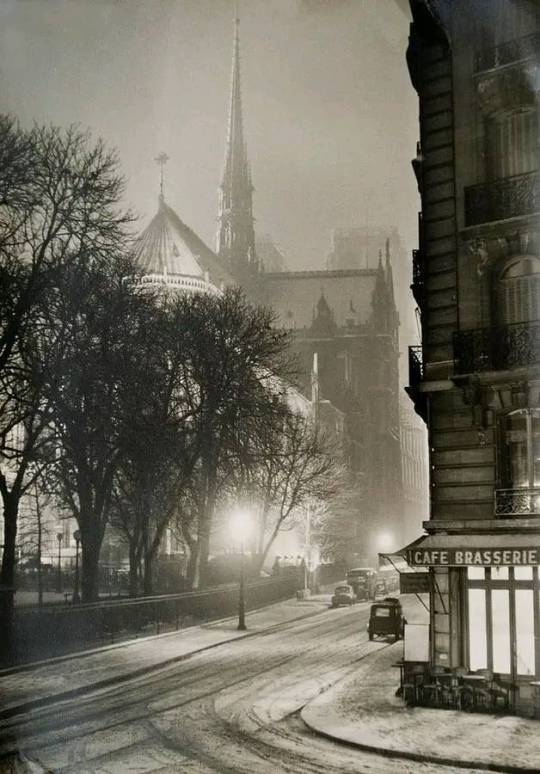
Notre Dame on a snowy evening, Paris 1953
49 notes
·
View notes
Text

...probably the only upside of sucking at google fu is that I still get to come across a new to me CDV of 🌊Papi🌊 now 🥰, when I thought I've seen every CDV of him...
#not art#photography#david farragut#david glasgow farragut#carte de visite#american civil war#american history#us navy#union navy#farragut friday
0 notes
Text




"Have One On Me" comparison :
-Right location, Wrong decade-
As Joanna said in an interview, a model in a some parisian art studio around 1920 in Paris (France) is one of the inspirations for the HOOM cover photo. Here with the early photographs of André-Adolphe-Eugène Disdéri, we are in France but a little earlyer than the 1920's, as this photographer worked between 1850 and his death in 1889. Don't you think those pictures share similarities with the four ones that are inside the Have One On Me album?
"André Adolphe-Eugène Disdéri (28 March 1819 – 4 October 1889) was a French photographer who started his photographic career as a daguerreotypist but gained greater fame for patenting his version of the carte de visite, a small photographic image which was mounted on a card. Disdéri, a brilliant showman, made this system of mass-production portraiture world famous."
#joanna newsom#have one on me#hoom#art#early photography#historic photographs#andre adolphe eugene disderi#Eugène Disdéri#have one on me comarison
9 notes
·
View notes
Photo
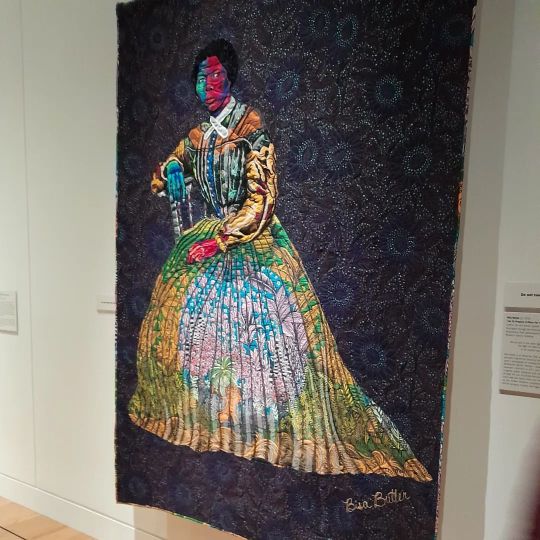
Beautiful-in-Person: Bisa Butler's quilted and appliquéd textile portrait of Harriet Tubman, based on the carte-de-visite photograph portrait of Harriet Tubman by Benjamin F. Powelson at the NMAAHC. #art #nmaahc #bisabutler #americanart #americanartist #herstorymakers #blackamericanheritage #blackhistorymonth #blackamericanhistory #travelwashingtondc #americanhistory #harriettubman #benjaminfpowelson #travelphotography #blackamericanartists (at Smithsonian National Museum of African American History and Culture) https://www.instagram.com/p/Co5ew0sunSc/?igshid=NGJjMDIxMWI=
#art#nmaahc#bisabutler#americanart#americanartist#herstorymakers#blackamericanheritage#blackhistorymonth#blackamericanhistory#travelwashingtondc#americanhistory#harriettubman#benjaminfpowelson#travelphotography#blackamericanartists
34 notes
·
View notes